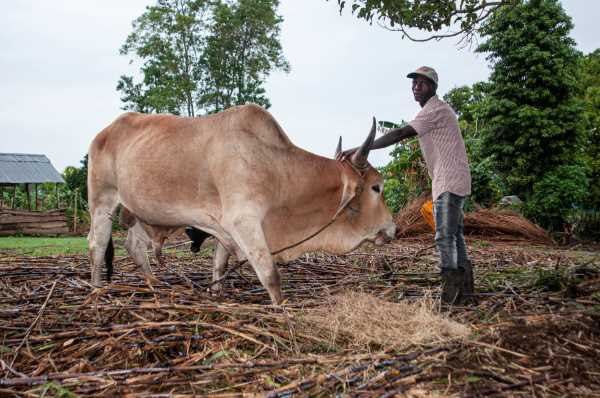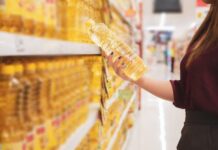Rollin Antoine, a cattle farmer and hay producer, showing his prized bull. / USAID/Haiti
By: Soukaina Martin is an Acting Development Outreach Communication Specialist at USAID’s Mission in Haiti.
For rural Haitian households, livestock is a critical asset, often considered an investment or “savings account” that provides families with quick cash for health care expenses, school fees, weddings, funerals or other unexpected bills.
In northern Haiti, increasingly frequent and prolonged droughts, due to the negative effects of climate change, have threatened the wellbeing of livestock and the families that depend on them. In 2016, thousands of animals perished during the last drought of the year, plunging many families deeper into poverty.
Jean Julien Decius, a 55-year-old farmer from Limonade in northern Haiti, is the proud owner of approximately 50 goats and half a dozen cattle, which represent his main source of income.
“I always had great difficulty feeding my animals, especially during periods of drought,” he says.
Rollin Antoine, another farmer from the town of Ouanaminthe in northeast Haiti, adds: “We were all in crisis because our animals were dying from hunger.”
Traditional open grazing practiced by livestock farmers also posed a threat to reforestation efforts and further exacerbated soil erosion.
Building Sustainable Agro-Pastoral Systems
To address the critical need to produce sustainable animal feed and the issue of environmental degradation, USAID’s Reforestation Project trained farmers in northern Haiti to produce, harvest, and store animal forage.
Raising animals in ways that do not further degrade the mountainous landscape is critical to the long-term sustainability of these lands and the people who depend on them.
The Reforestation Project helped farmers establish an eco-friendly agroforestry method of producing trees, animal feed, and crops on the same parcel of land, which allows farmers to diversify land use and boost output in a sustainable cycle.
SOURCE: MEDEIUM








